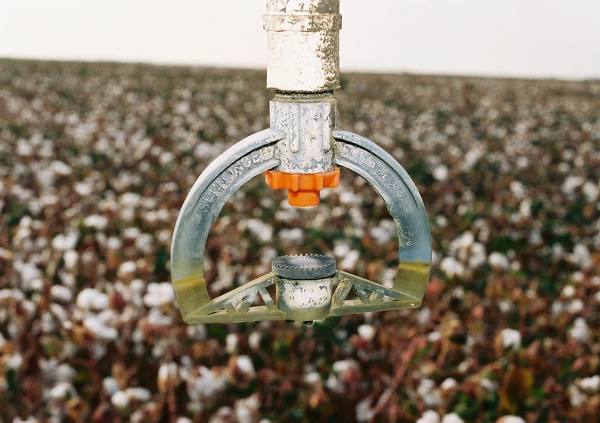
The population of Texas will continue to increase dramatically over the next 30 to 40 years.
The Texas water supply will not. In fact, estimates indicate that in the future Texas will not have adequate water to meet its needs during a drought.
Carmon McCain, supervisor, information and education group for the High Plains Underground Water District Number 1, told farmers and ag industry representatives at the recent Wheat and Water Issues Field Day at the Bushland USDA-ARS/Texas AgriLife Research Station that the population of Texas is expected to increase from 25.4 million in 2010 to 46.3 million by 2060. And water supplies are expected to decline by 10 percent over that same time.
“The water imbalance is projected to increase by 22 percent, from 18 million acre-feet in 2010 to 22 million acre-feet in 2060,” McCain said.
Groundwater supplies are expected to decline by 30 percent, from 8 million acre-feet in 2010 to 5.7 million acre-feet in 2060. Those reductions will come from depletions in the Ogallala Aquifer and reduced supplies from the Gulf Coast Aquifer (due to pumping restrictions).
That means agriculture, which accounts for 80 percent of the state’s water consumption, will be called on to find more ways to conserve. Municipal use accounts for 15 percent and livestock and manufacturing takes 5 percent. And the High Plains, especially the area around Lubbock, has the highest water demand in the state.
The Texas legislature, through House bill 1763, addressed the issue and requires groundwater conservation districts in groundwater management areas to set a desired future condition for the aquifer. That was required by all GMAs in the state by Sept. 1, 2010. All those deadlines were met, McCain said.
The HPWD set a 50/50 management goal, meaning that in 2060 the district would have 50 percent as much water available as it did in 2010 (50 years earlier). To achieve that goal, the HPWD board enacted a new district management plan last summer that has stirred controversy, not so much because farmers object to conservation measures as to the expense they will have to endure to meter and monitor water use.
The plan sets an allowable production rate, metering and reporting requirements and registration of water wells.
Allowable production rate begins with 1.75 acre-feet per contiguous acre per year. That amounts to 21 inches. That APR covers 2012 and 2013. For 2014 and 2015, the APR drops to 1.5 acre-feet per contiguous acre per year, or 18 inches. For 2016 and beyond, the rate drops to 1.25 acre-feet per contiguous acre, or 15 inches.
McCain said 2012 and 2013 are “learning years. No penalties will be assessed for exceeding APR.”
Water bank
Also, a well owner or operator can bank any amount of the APR for use during any of the following three years from the year the water was set aside. He must apply by March 1 of the year following the year the owner or operator banked the water.
McCain said all new wells or well systems required to be metered “must be equipped with a meter which complies with district meter specifications and is on the District Approved Meter List.
“All existing wells or well systems required to be metered must begin recording groundwater production through an authorized alternative measuring method.”
McCain said alternative measuring methods will be accepted until 2016.
“Once a meter has been installed on a well, the owner/operator must submit a form to the district. The district staff will then inspect and place a seal on the meter.”
All new wells must be registered with the district prior to drilling. Existing domestic wells do not have to be registered. Existing water wells used for oil and gas production that are exempt from permitting must register with the district.
“Existing wells producing 1.75 gallons per minute or less do not have to be registered,” McCain said.
“All other wells that are permitted by the district and are not pre-district wells and were exempt from permitting under previous district rules and do not meet one of the above exemptions, must register with the district.”
Cost of metering has created some controversy with farmers, many of whom use multiple wells to irrigate cropland and cite metering costs as high as several thousand dollars per well.
To address that issue, HPWD adopted a two-year moratorium on enforcement and civil penalties for exceeding the APR as well as failure to install meters on new wells or well systems by Jan. 1, 2012, and reporting requirements for groundwater production.
In late February, the district also adopted an 18-month study to determine:
A method to delineate areas within a district where the Ogallala Aquifer is incapable of producing 1.25 acre feet per acre per year,
Evaluating effectiveness and reliability of using alternative methods (other than water meters) to measure groundwater production, and
Creating an agricultural stakeholder advisory group to assist district staff with the study.
McCain said the 18-month moratorium will give the district an opportunity to develop a process “for monitoring and metering.
“Considering the current imbalance, we are trying to improve irrigation efficiency,” he said.
About the Author(s)
You May Also Like






